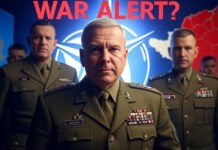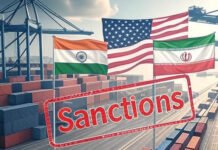INVC NEWS
Washington and Moscow : The Cold War was a period of political tension and military rivalry between the United States and the Soviet Union, along with their respective allies, that lasted roughly from the end of World War II in 1945 until the early 1990s. It was called the “Cold” War because it involved indirect conflicts and threats of war rather than direct military engagement between the two superpowers.
The primary cause of the Cold War was ideological differences between the capitalist system of the United States and its allies, and the communist system of the Soviet Union and its allies. Both sides sought to expand their influence and promote their respective ideologies around the world, leading to a global power struggle.
During the Cold War, various tactics were employed by both the United States and the Soviet Union to advance their interests and undermine the other side. These tactics included:
Nuclear arms race: The development and stockpiling of nuclear weapons by both superpowers. This led to a state of mutually assured destruction (MAD), where the fear of catastrophic consequences prevented direct military confrontation.
Espionage: Both sides engaged in extensive spying activities to gather intelligence on each other’s military capabilities, political intentions, and technological advancements. This involved the use of spies, double agents, and sophisticated surveillance techniques.
Proxy wars: Rather than engaging in direct conflict, the United States and the Soviet Union supported and often manipulated smaller nations in conflicts around the world. These proxy wars, such as the Korean War and the Vietnam War, allowed the superpowers to indirectly compete for influence and control.
Propaganda: Both sides used media, information campaigns, and ideological promotion to shape public opinion domestically and internationally. This involved promoting their own systems as superior and discrediting the opposing side.
Space race: The competition between the United States and the Soviet Union to achieve milestones in space exploration. This included the launch of satellites, manned spaceflights, and eventually landing astronauts on the moon.
Economic competition: The United States and the Soviet Union engaged in economic competition to demonstrate the superiority of their respective systems. This included providing economic aid to other nations, forming alliances, and engaging in trade partnerships.
Formation of military alliances: The United States formed NATO (North Atlantic Treaty Organization) with its Western European allies, while the Soviet Union established the Warsaw Pact with its Eastern European allies. These alliances provided military support and deterrence against potential aggression.
These tactics contributed to an atmosphere of tension, suspicion, and fear between the two superpowers and their allies. The Cold War came to an end with the collapse of the Soviet Union in the early 1990s, marking a significant shift in the global political landscape.
















